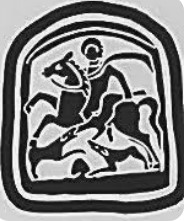ASPECTE PRIVIND EVOLUŢIA ARTEI OFICIALE ÎN ROMÂNIA COMUNISTĂ ÎN PERIOADA 1965–1974
ASPECTS REGARDING THE EVOLUTION OF OFFICIAL ART IN COMMUNIST ROMANIA BETWEEN 1965 AND 1974
Author(s): Adrian DeheleanuSubject(s): Political history, Government/Political systems, Politics and communication, Post-War period (1950 - 1989), History of Communism
Published by: Editura Mega Print SRL
Keywords: communism; official art; propaganda; ideology; Romania;
Summary/Abstract: A definite relationship of determination between the geopolitical map and the cultural map of the world always existed. The centers of political power, voluntary or involuntary, have contributed to the development of models to be followed for the artistic milieu. For the European culture a major role was played by the division after WW II, when the states of Central and Eastern Europe came under the influence of the USSR. Following the establishment of the communist regime in Romania, the evolution of the Romanian fine arts began to differ significantly from that of the fine arts in the countries left outside the totalitarian bloc. Starting from the premise that this evolution was determined by specific sociocultural rules, the article analyzes the relationship between the sphere of power and the artistic sphere throughout the Ceauşescu period of the communist regime. It proposes a synthetic vision combining art history with political science and sociology. The cultural revolution was also continued by the regime of Nicolae Ceausescu, within the project of training the new man. The rise to power of Nicolae Ceausescu was established on the background of a trend of de‑Stalinization initiated since the time of Gheorghe Gheorghiu‑Dej. From the evolution of culture standpoint, but not only of it, this meant an openness to the West, simultaneously with the exacerbation of nationalism. Until the mid–1970s, there was a relaxation of the artistic milieu, inasmuch as the regime gave the illusion that political interference in art would be increasingly limited. The management of the artistic discourse was no longer done by force, by constraining from the center, but was directed from within. Even so, the opening period did not turn out to be very long. The moment of glory of the Ceausescu regime came with the condemnation of the 1968 armed intervention of the Warsaw Pact in Czechoslovakia, except Romania. This demarcation toward Moscow established a positive image of Nicolae Ceausescu among the Western countries, but, at the same time, it coincided with the opening of the path from hero to idol. Hence, at the beginning of the 70’s of the 20th century, the raher short but fertile contact of the Romanian artistic milieu with the European cultural context quickly gave birth to some promising signals within the art of the moment. An international level production emerges, confirmed also by exhibitions organized abroad and several international awards obtained by Romanian artists in Paris, Edinburgh, Berlin, etc. But this inflorescence will not have time to be fully fulfilled in those few years of “socialist liberalism” authorized by the regime for political reasons which the intellectuals of the time can neither understand nor influence in their true motivation.
Journal: BANATICA
- Issue Year: 1/2023
- Issue No: 33
- Page Range: 589-608
- Page Count: 20
- Language: Romanian

